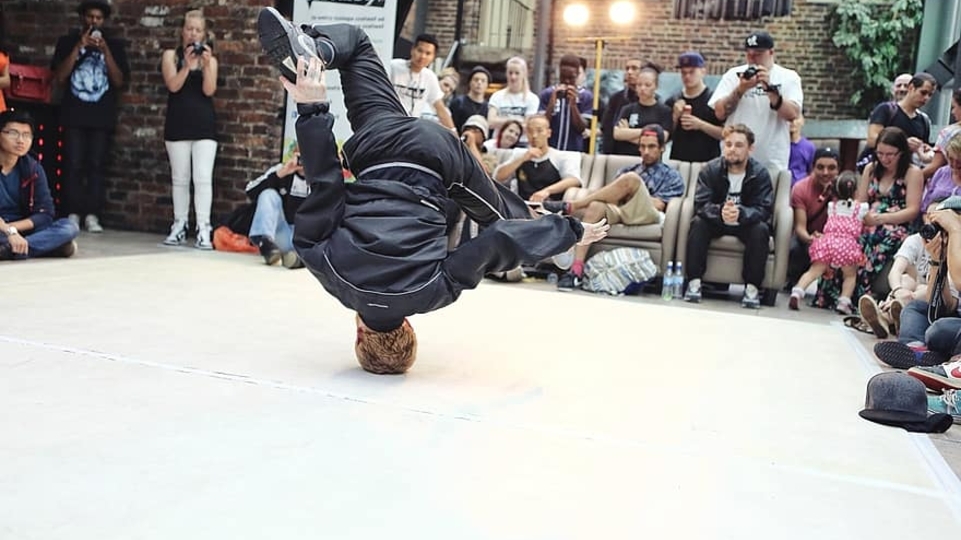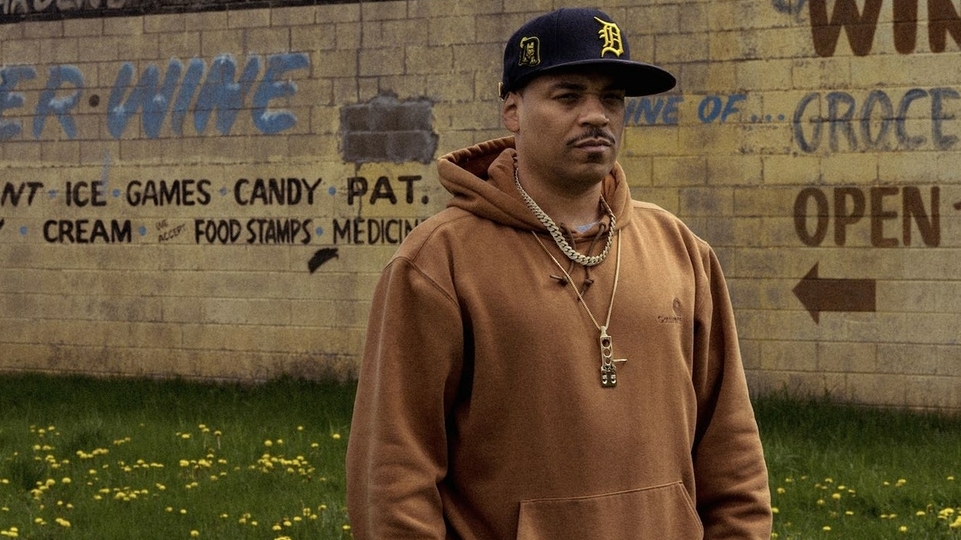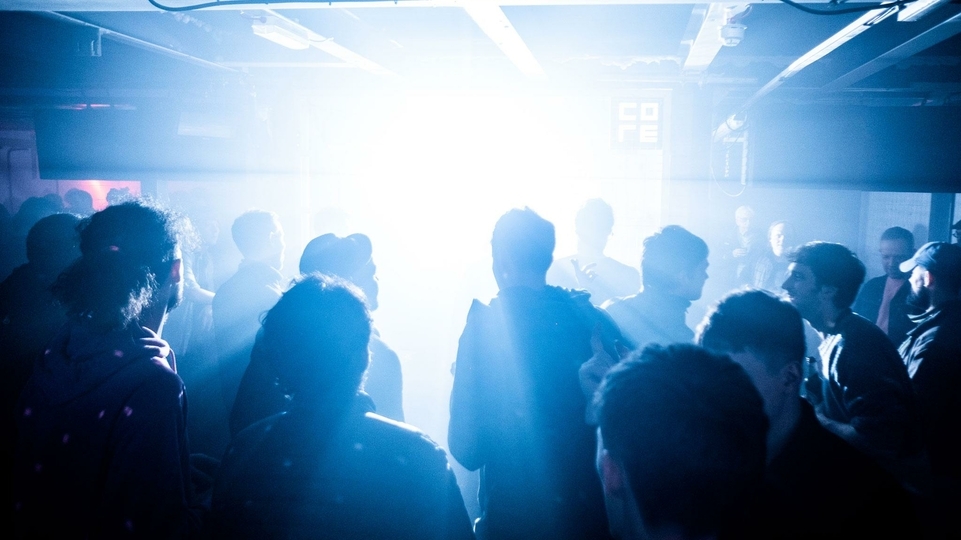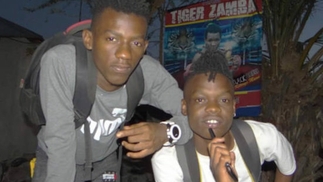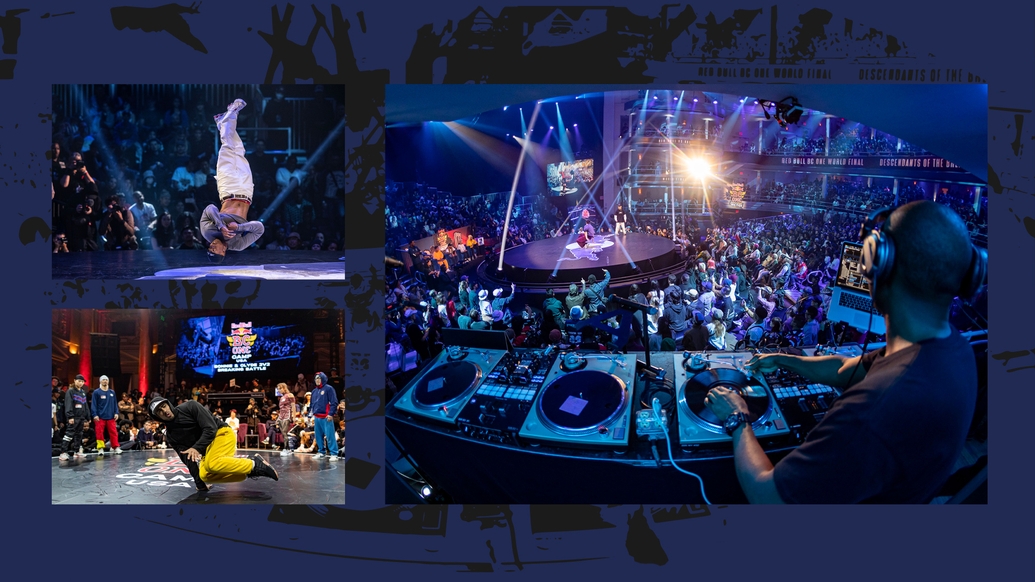
Making moves: the changing shape of breakdancing
Breaking (or breakdancing to the layperson) has been an essential facet of hip-hop culture since its beginning. Set to debut as an Olympic sport in 2024, a new level of recognition, pressure and excitement is sweeping through those who’ve dedicated their lives to the art. Tice Cin heads to NYC, the birthplace of hip-hop, to meet breakers and see them in competition at the Red Bull BC One World Final
Breaking culture is changing shape globally. An original pillar of hip-hop, b-boys and b-girls combine power moves with a stylish mix of attitude and playfulness, responding to the drum break in a beat while flowing out a story with their bodies — as MCs do with their voices. 2023 marks the 50th year of hip-hop, and breakers have an increased eye on them as lovers of the genre come together to celebrate. In addition, breaking has been recognised as an official Olympic sport for the Paris 2024 games. As the audience for breaking opens up, so do opportunities to learn about breaking, its relationship with hip- hop and place in the world.
On a tour bus in New York City, MC RayZa stands in zebra-stripe and green trackies asking, for the third time, “What are the five pillars of hip-hop?” The passengers — a mix of influencers, TikTokers and hip-hop heads — chant like a school assembly: “DJing, MCing, breaking, beatboxing and graffitiing.” One by one each person then answers, “What does hip-hop mean to you?” Later, the coach driver, Lancaster, tells DJ Mag, “I’ve seen a million tours. You guys answer the same every time, ‘It’s for the culture. It’s for the culture’. Before this culture you talk about, hip-hop came from struggle, poverty. Black people and Puerto Rican people trying to uplift and bring positivity to their communities, through those pillars.” He grew up in the area and is keen for people to document those left out of the story of hip-hop.
We approach 1520 Sedgwick Avenue in the Bronx, a community room known as one of the birthplaces of hip-hop. It was in venues like this that dancers first began breaking, before the style spilled out into city streets and later the world. Pioneering rapper Grandmaster Caz shares how he’s “part of a history that not a lot of people can claim” — one of the people to attend DJ Kool Herc’s iconic party thrown here for his sister Cindy Campbell on 11th August 1973.
“They charged 25 cents for girls, 50 for guys,” he continues. “You know how that works, right? The party went off without a hitch. Eventually the party and the energy outgrew this room. Herc took the party outside — he’d get his speakers and put them down right outside, playing music for the community as he practised. The origins of this culture are much deeper than you see advertised. There’s always more to it, more to the community.”
For instance, Sister Boo, Janice, Saundra, Mother Earth, and Deucy are regularly referenced by breakers and hip-hop scholars as talented women who used to break alongside young men at Herc’s parties and those of other key initiators like DJ Smokey. But their names aren’t widely known beyond those circles. B-boy and hip-hop scholar Serouj “Midus” Aprahamian interviewed original b-boy Sasa in his paper Going Off! The Untold Story of Breaking’s Birth, who spoke about seeing b-girls like Mother Earth burning b-boys: “She would act like she was digging a ten foot grave and act like she would put them in there and then put the dirt back up on them.”
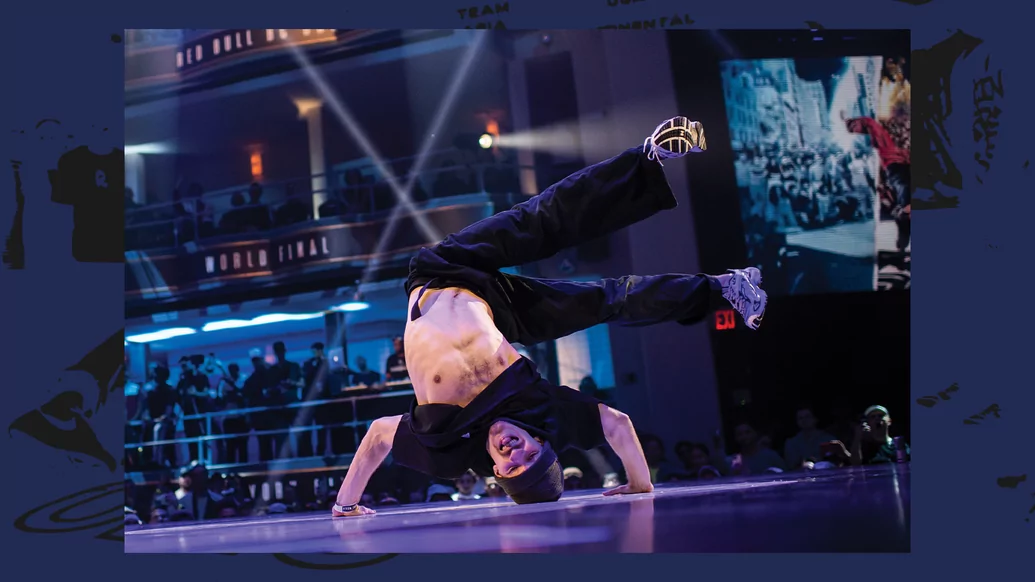
Pete Nice — MC, historian, and co-curator of the Universal Hip Hop Museum — tells us, “Hip-hop was formed only in NYC between ‘71 and ‘76. The Bronx is where breakbeats, uprocking and more began. We were able to go on MTV Raps and late-night radio because people dedicated their lives to hip-hop for hardly any money, every weekend at different jams throughout NYC for over 10 years before the business of hip-hop began.
Breaking is a type of resistance by communities often targeted by eminent domain, disinvestment and erasure. As record-breaking British b-girl Roxy shares, “Struggle kept a certain rawness in your mentality. Rawness doesn't just mean saying aggressive things in battle or doing the burns that you’ve learnt, it's in your whole being.” There have been struggles within the culture too. “When I came up there was misogyny and barely any b-girls compared with b-boys,” continues Roxy. “The scene was not very friendly. I've heard, ‘I don't like b-girls’, ‘I voted against you because your clothes were too baggy’, ‘I teach b-girls so I can sleep with them’. It still happens now but it's shut down more, thankfully!”
We’re told stories of kids watching breakers on old VHS tapes, breakers and graffiti artists like Phase 2 witnessing influential DJ John Brown at the Plaza Tunnel in the Bronx in ‘69, parties spilling out of Herc’s place into local clubs like The Puzzle. Excavating these untold histories is important to preserving the culture. “People don’t know their history,” says b-boy Victor, two-time winner of the Red Bull BC One World Championship. “It’s our job to do that. I once got bored of breaking and all the competitions. What brings back the love is straight-up hip-hop jams with all the pillars and the vibe: being there, enjoying the moment and seeing old friends.”
The intergenerational knowledge of breaking is crucial. OG b-boys like the late Frosty Freeze — who appeared in early films like Wild Style (1983) — would bring braggadocio to the game, claiming titles like “the man with the most freezes in the whole city” for his propensity for freezing between flows. He inspired the next generation of breakers such as Kid Glyde, who’s a judge at this year’s tournament. Glyde recommends producers who are making new tracks highly respected among breakers, like Baltimore’s DJ Fleg, the jazz-inspired DJ Lean Rock, djblesOne, DJ Nobunaga, and DJ EX of stalwart crew Dynamic Rockers.
“We are creating our own breakbeats to dance to,” he says, “and our culture's essence will still always champion the classic original beats.” He explores the relationship between hip-hop and breaking: “Breaking will always be a part of hip-hop as it evolves. Like hip-hop it expands into new territory, evolving and adapting with people all over the world and different cultures.”
Below, we speak to six new-gen b-boys and b-girls taking part in the Red Bull BC One World Finals about their practice, dreams and thoughts on breaking culture.

Kazakhstan’s Amir Zakirov won the b-boy Red Bull BC One World Final in 2021. He is known for using multiple mediums to express his dance, as a filmmaker, animator and visual artist. His short film Risk is an example of his experimental response to the risk that comes with breaking. “It’s about physical risk when you make moves and crash, but it’s also about mental risk and financial risk,” he tells us. “The fact that when you’re an artist you push yourself.”
This inquiry into the interior life of a breaker is an important part of his process — “The life of an artist is real art too. You can’t explain why you do it to people who are not from art. When I started, it was for art, I wasn’t thinking of the Olympics. I couldn’t imagine I’d have money from it. Now this risk has brought me a lot of things.”
Politics also has an impact on his breaking. “It’s not so easy to dance in Kazakhstan; it's not so easy to travel worldwide because of visas, it’s expensive, it’s far, and also because of the culture. I’m grateful that with the Olympics, breakers can now have increased support from the government.” Most importantly, he had his grandmother rooting for him too. “I had a lot of help from my grandmother when she was alive, she really pushed me and [did] a lot for me.”
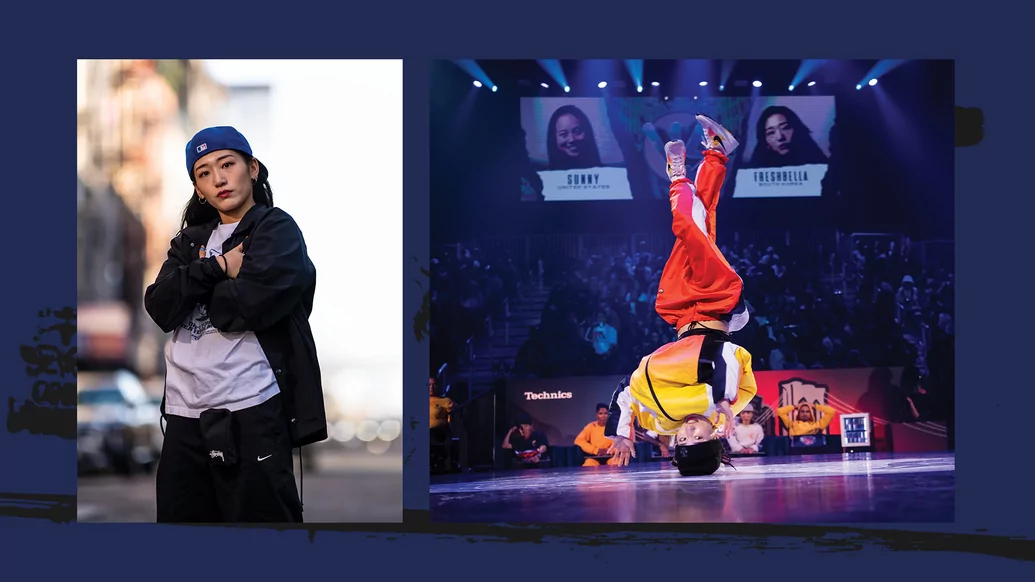
Jeon Ji Ye, aka Freshbella, was born in Gunsan, South Korea. She hung up her boots as a figure skater, so her parents encouraged her to move to another more reliable sport. “When I first started breaking my parents weren’t happy; they thought of breaking as just power moves, unsafe,” she recalls. Like many parents of emerging breakers, Freshbella’s preferred the idea of her having full-time stable employment. Breaking becoming recognised as an Olympic sport fully solidified their support for her career as a breaking athlete. Freshbella’s been an established breaker for seven years and is training to represent South Korea in the Paris Olympics.
Speaking before the 2022 Red Bull BC One World Finals, she says, “It’s one of the biggest competitions in the world. For every single one I’ve tried my best to showcase my skillset and the full range of my moves.” Her respect for hip-hop is reverent: “Hip-hop started from the streets in New York. It’s fashion, music, breaking. Everything about it is vital for me, as a South Korean.
“Hip-hop in Korea stems from its rappers. One of the MCs I listen to is a South Korean rapper called nafla, who’s worked with some of the greats of K hip-hop such as Paloalto. He raps with old-school boom-bap beats.” She smiles. “I prefer it old school. The OG stuff. When I dance in clubs, it’s chill music like that.”

Lee-Lou Demierre grew up with YouTube. At seven, he was already watching Red Bull BC One battles on the platform, admiring the likes of Hong 10 and Physicx. That made him want to be at the World Finals as well, and after a childhood of travelling to competitions with his b-girl mum, he eventually made his debut in 2021, returning again in 2022 as a finalist in the competition. He’s part of Eindhoven-based crew The Ruggeds, who he credits for his confidence in being himself, staying calm and loose with his movements.
Lee is also a talented producer under the name WATERBREH, releasing aquatic breakbeats that have a smooth funk sliding style akin to his dancing. “Music influences the way I dance,” he says. “The energy, the BPM... It decides how you move. Mick Jenkins, Monte Booker, Kaytranada — they inspire me, how their creative brains work.”
The breakbeats at competitions are often different to what he’d listen to in his living room: “I practise to experimental broken beats, jazz and floating house, stuff like Ben Hauke ‘One For Goldtooth (2-Step Swing)’.” Breaking for Lee is a mental game where his signature anime-like windmills become a movie in his mind. “On a plane to a competition I’ll sleep, awake, visualise, sleep again.” The heart of what Lee does comes from a respect for the lineage of breaking and hip-hop. “I grew up with a mum who was into breaking and she has been in the game for a long time. She grew up with hip-hop. I got it from her. My mum taught me how to be free in what I do; breaking is a free art form.”
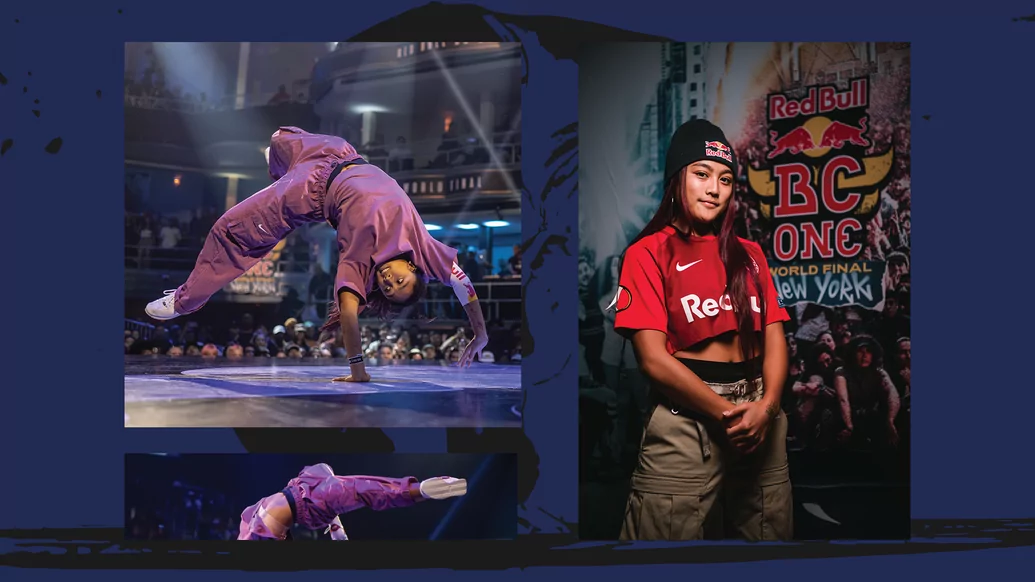
Logistx won the b-girl BC One World Final in 2021, the youngest competitor to ever walk away with a championship belt. She had a dance dad, and often struggled with the pressures of overcoming generational poverty to become a starred performer. “That survival mentality drove toxicities in the household,” she explains. She struggled heavily with her mental health in her early teens: “Why am I feeling depressed at 12 and suicidal at 14? Months at a time where I didn't have the heart to get up and practise something I'd fallen in love with at a young age.”
These questions led to her honing in on her mental health, trying three therapists before she found the right person, a former athlete who helps her with her mental health and her mental performance. “Those are two different things: mental performance is in the game, and mental health is that foundation that helps you win the game. Sometimes our traumas can give way to lessons that help us channel a new way of being.” Since her self-realisation she’s become a mental health activist. She speaks about her nerves around Olympic qualifying events: ‘It's exciting because I have more clarity in what I want to do. I want to win and share a message of love through breaking... It’s made of love. When I got into breaking it was all pure fun, connecting me to family and friends. I don’t want this to just be seen as a sport, but as an outlet for freedom and inspiration whether you're in the club or alone.”

Dancing makes Luma feel safe: “I found my way with breaking, it’s my balance.” To Luma, that means breaking around family. She grew up in the “summer city” of Medellín around “breaking, family, parties, camping”, before moving to the faster-paced town of Bogotá. In the Colombian capital, there are jams every weekend, in comparison to the great but infrequent events of her hometown. “I need this Bogotá culture of work then breaking,” she says.
The finances of breaking can be difficult for those competing internationally. “In Colombia I cannot work as easily, the pay averages on 200 dollars per month, 10 dollars per class. When I’m my own sponsor for competitions, I need to pay for my flights, hotels and expenses, unless they are the scale of BC One. I can’t work in Colombia and also invest in my career.”
She’s worked in catering with her friends to pay her way, and now teaches breaking at a local hip-hop school, but she stresses that “breaking life is freestyle life. What does fame mean when you are away from your home and you don’t have that security?” She balances it by embracing gratitude and connecting with fellow breakers on her travels, “because when a competition finishes I am back to reality, training and sleeping in different beds during my breaking travels. Gratitude is important, being open to life and surprising yourself — ‘Oh my God, look what I’ve achieved’.”

Some breakers are inspired by nature, objects and their surroundings; they may imagine themselves as a wave from a rippling beachfront in their hometown, or the clean lines of a robotised arm. Others just hear the beat and move, locked in to the song. B-boy Victor does both. “Animals, shapes of trees — I experiment and have different concepts,” he says. “Music is first. Dancing on beat and getting deeper into it. There’s like five different instruments playing in one song, you can experiment and go from the bass to the drums to the snare. Get deeper into that rabbit hole...”
He’s a huge lover of music, dancing to hip-hop like that on Griselda Records or ‘70s funk like Incredible Bongo Band. Victor’s dad and his twin were breakers in Mexico. They taught Victor and his siblings. He was mainly inspired by his cousin — “I thought we were the only breakers in the world.” Victor and his cousin learned from watching breakers doing headspins and windmills on MTV, then they started meeting other breakers and the events began.
Being such an experienced breaker has helped him to ground himself. “I learned not to overthink. You start getting on stage and looking robotic by going over moves. I enjoy myself when I’m dancing now.” Training is part of his wellness routine. “I go boxing, Muay Thai training, I put my headphones on and bike 20 miles around Malibu. I meditate and do callisthenics.” To Victor, who won this year’s b-boy competition, breaking is underestimated: “People think we just spin on our backs and heads. Actually, we’re like painters but with our bodies.”

